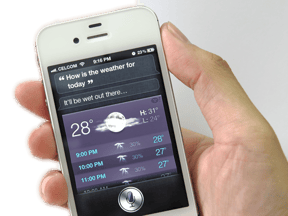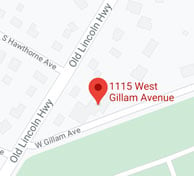How you do know which heat pump -- standard or hyper-heat -- is best for your home comfort? To put it plainly, a standard pump will offer sufficient heating for the shoulder seasons. If you want to heat your home all winter or if you live where it gets freezing, you'll want to use a Hyper-Heat.

In this article, we'll get a little more specific. We'll go over the difference between Hyper-Heat and standard models and talk about what factors make one more ideal over the other, depending on your home.
But first, what is a heat pump? Heat pumps have reversible cycles that allow them to take the hot air out of a room and remove it outside, and also absorb heat energy from outside and pump it into your home. In other words, they heat and cool your home!
You can read more about the benefits of heat pumps here.
Choosing Between a Hyper-Heat and Standard Heat Pump
A big factor to consider when choosing a heat pump is the weather in your area and if you want to use your new system year-round or mostly for cooling purposes. The difference has to do with how heat pumps operate.
At what temperature is a heat pump not effective?
Even when it's cold outside, there's still heat, or thermal energy, in the air. Heat pumps draw in that thermal energy, amplify it, and send it into your home through the air handlers. Eventually, there's not enough warmth for the heat pump to use; but that's where Mitsubishi Hyper-Heat heat pumps differ. Hyper-Heat can work in much lower temperatures than standard models.
 Most standard heat pumps stop working when the temperature outside is below 25 degrees Fahrenheit. Once it's too cold to work, it will start blowing cold air into your home -- the last thing you want in the winter! However, Hyper-Heat models use H2i® technology to provide up to 100 percent of heating capacity at five degrees, and work all the way down to negative 13 Fahrenheit.
Most standard heat pumps stop working when the temperature outside is below 25 degrees Fahrenheit. Once it's too cold to work, it will start blowing cold air into your home -- the last thing you want in the winter! However, Hyper-Heat models use H2i® technology to provide up to 100 percent of heating capacity at five degrees, and work all the way down to negative 13 Fahrenheit.Basically, the decision rests on how you want to use your system. You can use a standard heat pump for heat in the milder seasons and pair it with another system, like a furnace, for heat in the colder seasons. In this case, the heat pump will be a supplemental heat source, limiting the amount of oil or gas you need to use throughout the year. If you live where it gets colder than 25 degrees and want to use a heat pump as a year-round solution, you'll want to go with Hyper-Heat.

Does wind chill have an effect?
Wind chill does not affect a heat pump’s performance. You only need to consider the “real” temperature -- not the “feels like” measure they give you to account for wind chill. As long as the actual temperature stays in range, your model will still do the job.
Don’t let weather forecasts with wind chills misguide you when choosing a heat pump. Wind chill has to do with the rate that heat leaves your body more than it does with the temperature. As long as the “real” temperature doesn’t dip below 25 or negative 13, your standard heat pump or Hyper-Heat heat pump will work just fine.
Not to mention, the coldest it's ever been in the Delaware Valley is negative seven degrees. So if you live in the are and you go with a Hyper-Heat model, you will definitely have seamless heating and cooling year-round. If you'd rather just use the heat pump for milder weather, you can still opt for a supplemental heat source for the winter.
Ducted versus ductless?
Both standard and Hyper-Heat heat pumps can function as ducted or ductless systems. To decide which is better for your home, you will need to consider factors such as how you want your home to look, if there is ductwork already in place, the size of your home, etc.

In summary
In summary, a standard heat pump can still help warm your home even though it can’t handle the dead of winter. Instead, you can use it for supplemental heat during the shoulder seasons -- early fall and late spring.
If you go with a standard heat pump as a supplemental heat source, then you'll still have to use another heat source such as a furnace, radiator, boiler, baseboard, etc. These will keep you warm even on the coldest days, but they use much more energy than a heat pump alone would.
Heat pumps are much more energy efficient because, as we said earlier, the heat transfer process relies on moving thermal energy, not generating warmth. So, you can use a standard heat pump on days when it's chilly but when a furnace or other central system would be overkill. This way you can get energy-efficient comfort until the winter temperatures really start kicking in and you need to use your traditional HVAC system. And, as we see more mild winters, there are more opportunities to use the standard model.
On the other hand, you can use a Hyper-Heat heat pump as your one go-to cooling and heating source, even in extreme temperatures. Hyper-Heat also costs more on average to install, but can save money in the long run due to energy efficiency and tax rebates.
If you live in the Delaware Valley/Greater Philadelphia area and would like to find comfort within your home, visit our website or give us a call at 215 - 245 - 3200 to learn more.





